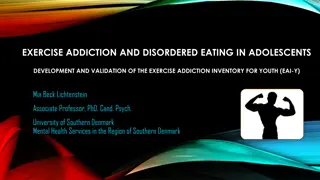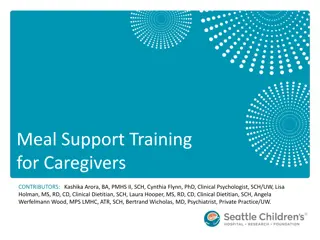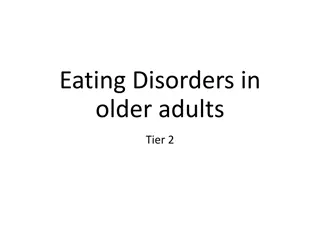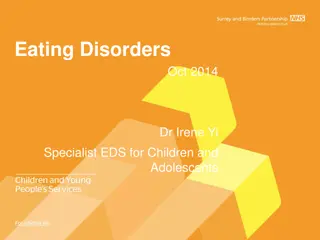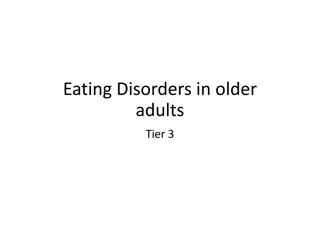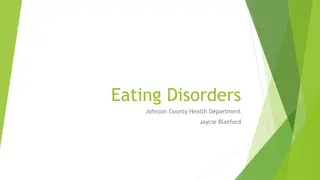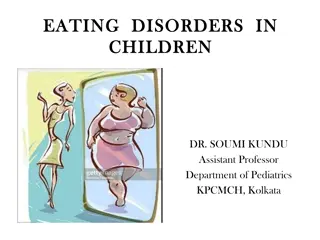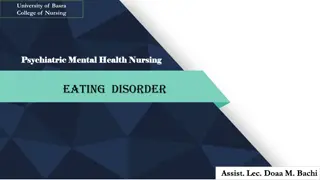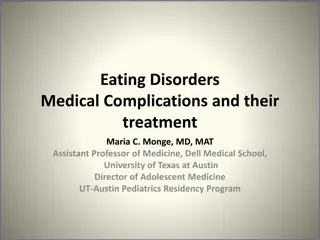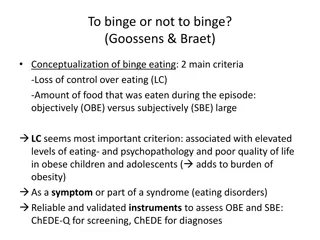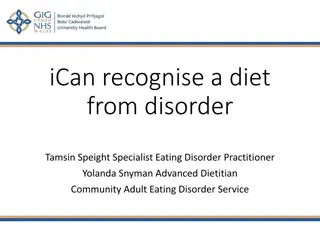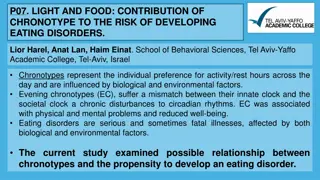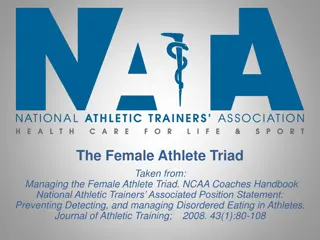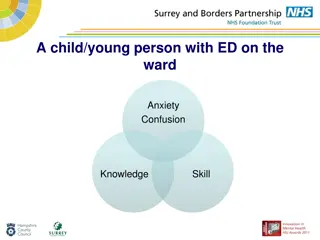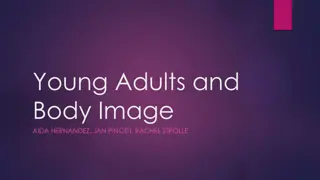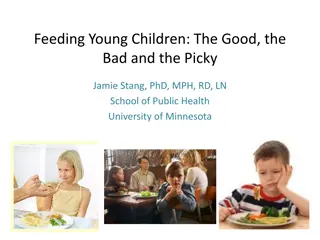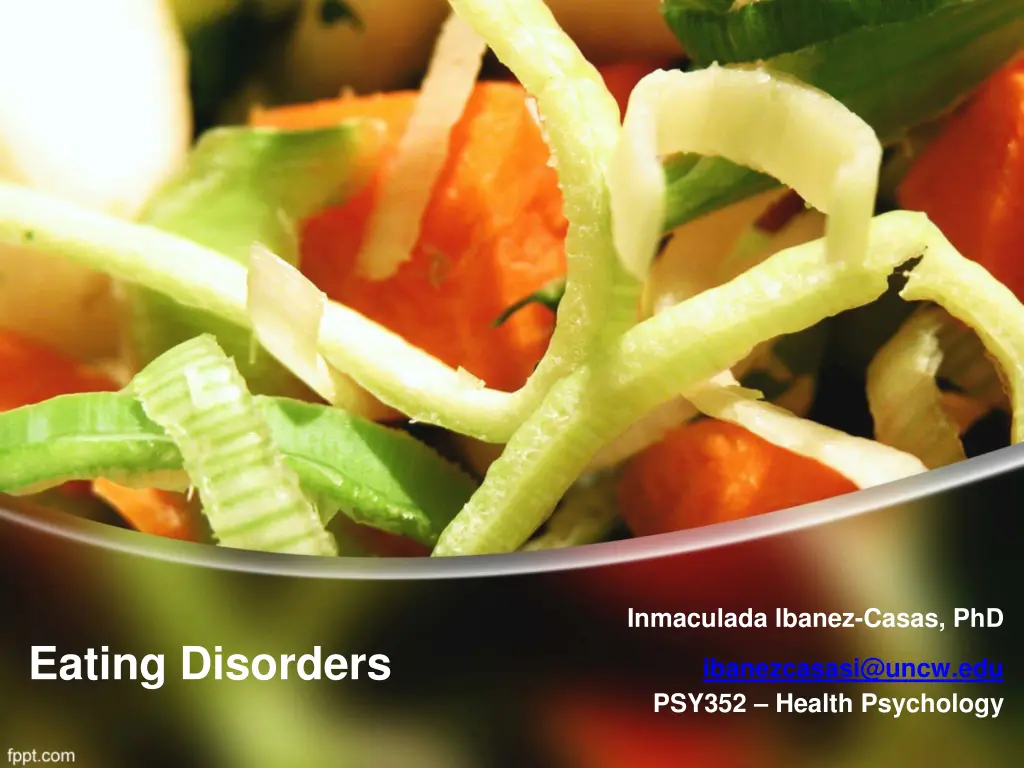
Understanding the Biopsychosocial Approach to Health Psychology and Eating Behaviors
Discover the connection between health psychology and eating behaviors, delving into topics like obesity, healthy eating practices, and the biopsychosocial influences on food intake. Learn how biological, psychological, and social factors shape our relationship with food and impact our overall well-being.
Download Presentation

Please find below an Image/Link to download the presentation.
The content on the website is provided AS IS for your information and personal use only. It may not be sold, licensed, or shared on other websites without obtaining consent from the author. If you encounter any issues during the download, it is possible that the publisher has removed the file from their server.
You are allowed to download the files provided on this website for personal or commercial use, subject to the condition that they are used lawfully. All files are the property of their respective owners.
The content on the website is provided AS IS for your information and personal use only. It may not be sold, licensed, or shared on other websites without obtaining consent from the author.
E N D
Presentation Transcript
Inmaculada Ibanez-Casas, PhD Eating Disorders ibanezcasasi@uncw.edu PSY352 Health Psychology
Recommended reading Applications of Health Psychology to Eating behaviors: Improving Health Through Nutritional Changes. http://www.jblearning.com/samples/0763743828/43828_CH05_LO_5183.pdf
Learning objectives Health Psychology and eating behaviors Obesity Other eating problems
Learning objectives Health Psychology and eating behaviors Obesity Other eating problems
Health Psychology and Eating Health Psychology =Good nutritional practices + weight control Biopsychosocial approach Science of healthy eating : Biopsychosocial influences on food intake Basic components of healthy eating behaviors Ways to avoid unhealthy eating practices
Biopsychosocial approach: Biological factors To continue to live To grow when we are young For energy To repair damaged body tissue To prevent disease
Biopsychosocial approach: Psychological factors Eating = learned behavior Increased intake under emotional states Easing uncomfortable feelings with food (learned) People reward themselves with food
Healthy Eating http://www.choosemyplate.gov
Learning objectives Health Psychology and eating behaviors Obesity Other eating problems
Obesity 2+ in 3 adults = overweight or obese. 1+ in 3 adults = obese: 44 millions adults 1+ in 20 adults = extreme obesity. 1 in 3 children/adolescents (ages 6-19) = overweight or obese. 1+ in 6 children/adolescents (ages 6-19) = obese. Rates TRIPLED over the past 20 years Data from the National Health and Nutrition Examination Survey, 2009 2010
Obesity World Map of obesity Obesity data in US The youngest Type II Diabetes
Obesity Primary cause of death: Heart disease Strokes Cancer Type II Diabetes: Blindness Amputations Kidney failure
Teach every child about food https://tedcdnpi-a.akamaihd.net/r/tedcdnpe-a.akamaihd.net/images/ted/148992_254x191.jpg? Jamie Oliver Chef, activist TED Prize winner
Promoting healthy eating Gradual change in eating behaviors Record and evaluation of eating behaviors Retrospective Prospective Compare food record with Ideal Diet (i.e. choosemydiet.com) Record and evaluation of moods and thoughts One single change at a time Look forward, not back Preventing relapse 16
Learning objectives Health Psychology and eating behaviors Obesity Other eating problems
Other eating problems: Malnutrition Lack of sufficient nutrients Faulty eating = hypertension, high cholesterol, kidney stones, osteoporosis, gout Related to low income, inadequate education, debilitating health conditions Solutions: economic, political, social, & individual changes
Other eating problems: Anorexia Nervosa Restriction of energy intake: Counts calories or portions carefully Avoid highly caloric food (dairy, meat,wheat, ) Exercises excessively self-induced starvation and excessive weight loss Thin, pale, emaciated Intense fear of gaining weight: obsessed with eating, food and weight Weights repeatedly (10+ times a day!) Disturbance in self-perception feels fat Social withdrawal Depressed, lethargic, feeling cold
Other eating problems: Bulimia nervosa Bingeing + purging Only eat diet or low-fat foods (except binges) Laxatives, diuretics, enemas Excuses to go to bathroom after meals Loss of control during binge Fear of weight gain Disturbance in self-perception Intensely unhappy with body size, shape, or weight Exercise most of the time Social withdrawal
Consequences of eating disorders Weakened heart muscles Kidney failure Iron-deficiency anemia Abnormal electrical activity in the brain Amenorrhea (low body fat) Premature osteoporosis (low estrogen levels) Erosion of tooth & rupture of esophagus (vomiting) 21
Inmaculada Ibanez-Casas, PhD Eating Disorders ibanezcasasi@uncw.edu PSY352 Health Psychology

